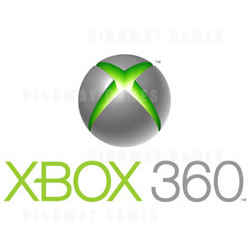The erosion of arcade players too the home market is a well-charted period for the amusement scene. But 2005 could have marked a growing short fall in popularity for the home game market!
For the seventh month running, the North American consumer game sales have fallen; during March falling by roughly 8 per cent to $499 million. Hardware sales of new console systems also fell by 31 per cent to $220 million.
Unsubstantiated sources at the Xbox Live! Arcade broadband game hub revealed they would be developing an arcade emulation software environment that would allow them to run classic arcade games thought their subscription online service; originally incorrectly leaked on the net as Microsoft would be buying the Multi Arcade Machine Emulator (MAME) freeware for their system.
The need to find additional content was seen as Microsoft's attempt to distance themselves against claims by Nintendo that they would be making available on the launch of their new console (Revolution now renamed to ‘Wii' (pronounced We!) classic console titles from a large number of 8-bit and 16-bit sources.
The application of consumer games systems into the amusement sector is not a new idea – a well-trodden path with a dead end (and a large number of skeletal remains at its end). Most recently the Stinger feature on the consumer sector charted the influence of products such as the PlayChoice by Nintendo, the Amiga powered Arcadia system, and SEGA Master System. After ancient history we have seen sporadic appearances of consumer machines illegally converted to a 'timed' system to play in venues. In particular in China and Taiwan a number of manufactures flaunted the copyright of the PS2 and Xbox with JAMMA based game kits, while Nintendo has created an ultra secret project with a Korean developer to allow their GameCube to be used in a retail setting.
Nintendo was one of the first amusement companies to use a pay-for-time credit model with their ‘Nintendo Super System' arcade platform. This model is employed with the Timecade system buying time (remaining units displayed on the marquee). Other than software firmware, the cabinet included arcade sticks, with Xbox Memory Port to save games.
The future of consoles in arcade may still be transitional, but with growing interest by eager console game publishers - some of the elements of the concept may need to be re-visited. In the company weeks The Stinger Report will be covering the vast American E3 exhibition and charting a changing landscape for consumer gaming and the implications this brings to the Out-of-Home leisure entertainment sector.
The Stinger Report is provided to Highwaygames by Kevin Williams, the publisher of "The Stinger Report". To read the full articles and information, please visit
www.thestingerreport.com.




